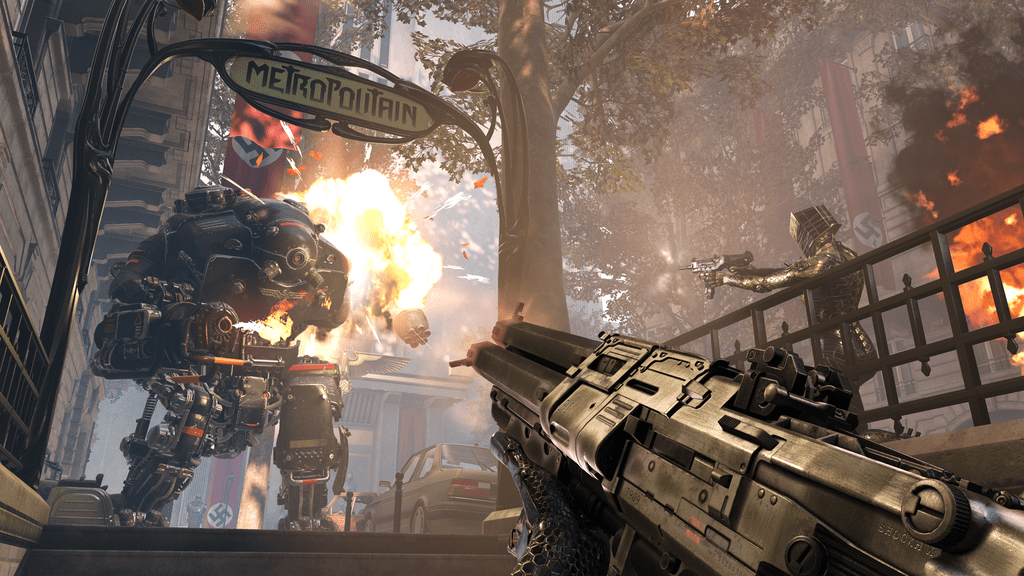
I’ve been very surprised at the negative reviews that Wolfenstein: Youngblood has received, as well as the widespread criticism of it on social media. I feel like I’m playing a different game to the one people are moaning about – and although it has one or two niggles, they seem to have been blown out of all proportion by many people (I’ll post my own take on the game soon).
But let’s talk about one thing that has been grabbing headlines – microtransactions. I didn’t even realise that Wolfenstein: Youngblood HAD microtransactions until I read about them online, and that was after I was several hours into the campaign. You can buy ‘gold bars’ with real money to unlock certain cosmetic items like new skins, but none of these things has any impact on how the game plays (aside from making you look more fancy), and almost all of them can also be purchased with the silver coins you earn within the game. To be honest, I cannot imagine how you could make microtransactions less intrusive than this, and I can’t understand what people are complaining about. Yet complain they do – to the point where one of the game’s developers locked down his Twitter account after receiving so much harassment.

Presumably it’s simply because microtransactions are present at all in a full-price game (or in this case, a mid-price game, seeing as it has an RRP of £29.99). But really, I can’t begrudge publishers and developers adding these things in, as long as they don’t break the game by essentially letting you pay to win (and the less said about hated loot boxes and their dodgy gambling-lite qualities, the better). We’ve had microtransactions in full-price games for a while now, and they’re not going away – and arguments that publishers are being ‘greedy’ by adding them just don’t hold water, in my opinion.
I wrote an in-depth article about microtransactions for GamesRadar a while back where I crunched the numbers about game development. The long and the short of is that games have never been cheaper, but the cost of developing AAA games is rising exponentially. Meanwhile, the actual games market in terms of consoles sold is only rising linearly. So publishers have a few options: they could try to make games more cheaply, perhaps by crunching developers harder or outsourcing work to countries with cheaper labour rates; they could raise the price of AAA games; or they could add microtransactions to boost the potential earnings from individual games.
Out of these three options, I’d much rather the third one: providing of course that the microtransactions are relatively unobtrusive and linked to solely cosmetic items. The backlash over situations like EA’s handling of Star Wars Battlefront II, however, is entirely justified: in that case, the proposed microtransactions would have let players buy the most powerful characters, like Darth Vader, which were otherwise near impossible to unlock in game without hundreds of hours of play, and this was combined with loot boxes that could see you paying cash for a collection of useless trinkets. The fact that EA U-turned on this decision quite quickly, and the fact that ever since then publishers have been keen to trumpet that their latest game doesn’t have loot boxes, suggest that we’ve passed the nadir of microtransactions. But that doesn’t mean that microtransactions are going away entirely.
I don’t begrudge Wolfenstein: Youngblood for providing the option to buy a fancy-looking powersuit for real money. If people want to spend their money on that, then fine. And if cosmetic-only microtransactions like these help to keep the cost of games from going up, all the better. Meanwhile, I can happily ignore them entirely.

Leave a reply to Matthew Thompson Cancel reply